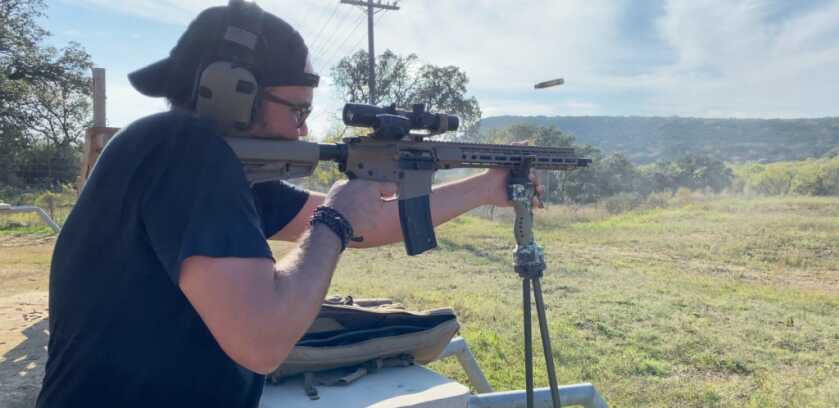
Use Case
I don’t shoot hogs from a blind here in Texas so I often find myself shooting from strange angles or on uneven terrain. Last year I did a review of the BogPod DeathGrip carbon fiber tripod and while it provided excellent stability…. its 7.5 pound weight made it cumbersome to pack up and carry across different pastures thru the night. I wanted to explore how much of a tradeoff I’m willing to make between stability and maneuverability.
Let’s be clear, this is not intended for precision shooting where stability is paramount. A good set of shooting sticks will find the right balance between stability and maneuverability.

Stability & Maneuverability
At first, I was skeptical of the Trigger Stick bipod and suspected the monopod would be my preference. This was mostly due to the fact that I was worried about the two metal legs clacking together and making noise while stalking in on sounders. My concerns were not warranted. The bipod legs remain separated and only come into contact with one another if you exert significant force on them.
After realizing this, the bipod unit became my preferred model. It was incredibly easy to deploy and get into a stable position whereas the monopod had much more wobble due to only having a single leg. Not rocket science. I probably could have told you that.
However, for some people taking closer range shots who prioritize maneuverability over stability – the monopod is an excellent choice. It feels lighter than it actually is and doubles as a walking stick.
- Gen 3 Trigger Stick Bipod: Adjustable from 24″ to 61″
- Weight 2.5lbs
- Retail Price: $130
- Gen 3 Trigger Stick Monopod: Adjustable from 35″ to 65″
- Weight 2lbs
- Retail Price: $80
- Both models include their patented quick lock Yoke mounting system enabling you to mount spotting scopes or cameras (camera mount sold separately) with a 360 degree pan.
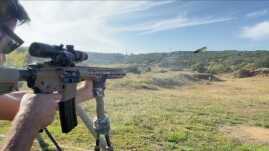
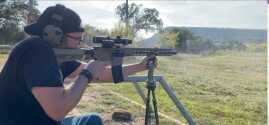
I did some research on the materials these Trigger Sticks are made from but could only find that they’re constructed from a “blended” material. Whatever Primos is using has held up great. I’ve admittedly abused these as they’ve stayed in the bed of my truck for the last 5 months exposed to Texas humidity, rain, and recently snow and ice. Not a spot of rust or marring to the Trigger Stick legs.
Primos has done a phenomenal job at developing an ergonomic shooting stick. The Trigger Stick head and activation trigger are incredibly ergonomic and quick to deploy. The head has curves in the right places to make getting a solid purchase intuitive. The quick lock Yoke mounting system is secure and also provides the option of mounting a spotting scope to your unit if you desire. I’m mostly hunting at night so this isn’t super relevant to me but if you’re out west taking longer-range shots on elk or mule deer, this is an excellent option.
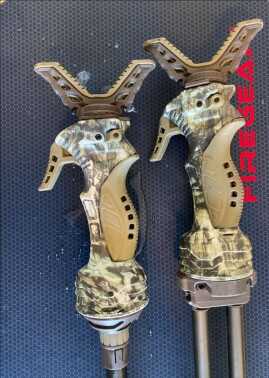
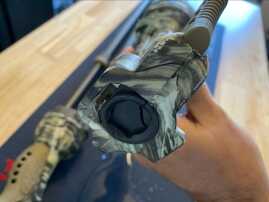
Which is Better – Monopod or Bipod?
For my use case, the Gen 3 Trigger Stick bipod was the better balance of stability and maneuverability. I found it difficult to get adequate stability with the monopod on some of the terrain I find myself in here in Texas. I found this more evident when taking longer range shots on feral hogs. You can view some thermal footage I took using both models here.
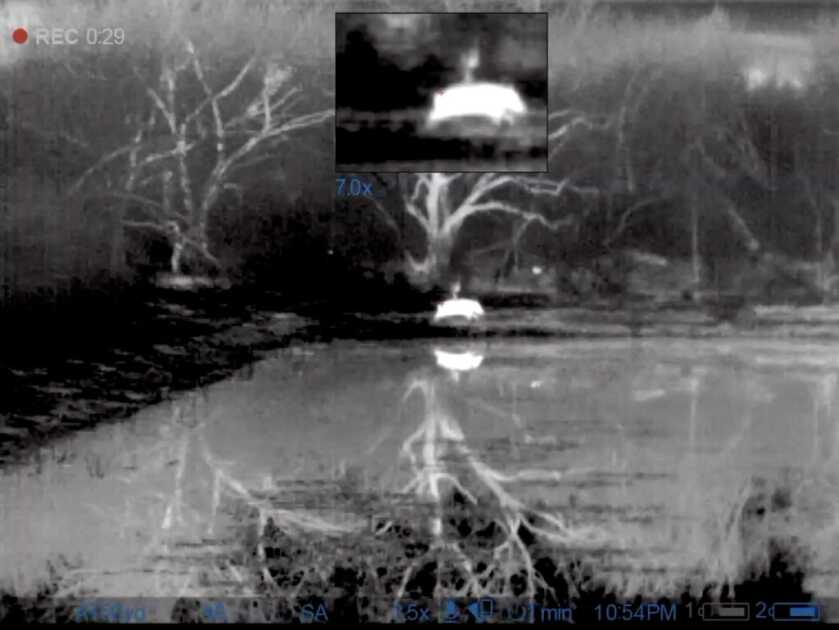
The picture above is where I pulled a shot just high of a feral hog a few weeks ago. I sent the 6.5 Grendel SST a bit prematurely and should have waited to find a good balance. This shot was at an angle about 180 yards away. It certainly takes a little bit longer to get stable and settled in on the monopod. The bipod was much easier to get locked into the desired position. So depending on your use case and typical shooting distance, the bipod model may be better for you.

